I often like to say that making a terrarium is a lot like baking a cake.
In this case, it’s because a soggy bottom can quickly ruin both of them…
Too much moisture in a terrarium substrate can create an anaerobic environment, leading to root rot, mold overgrowth, and more.
Plus, unlike with cakes, it’s not always possible to fix the problem by drying and or/removing parts.
With terrariums, prevention is the best medicine. So you can build in a fail-safe solution instead. Enter the false bottom! (Otherwise known as a drainage layer).
It’s ideal for terrarium plants that don’t like water around their roots, but this approach works in just about any project! So they’re perfect for the overzealous plant parent too.
Let’s dig in.
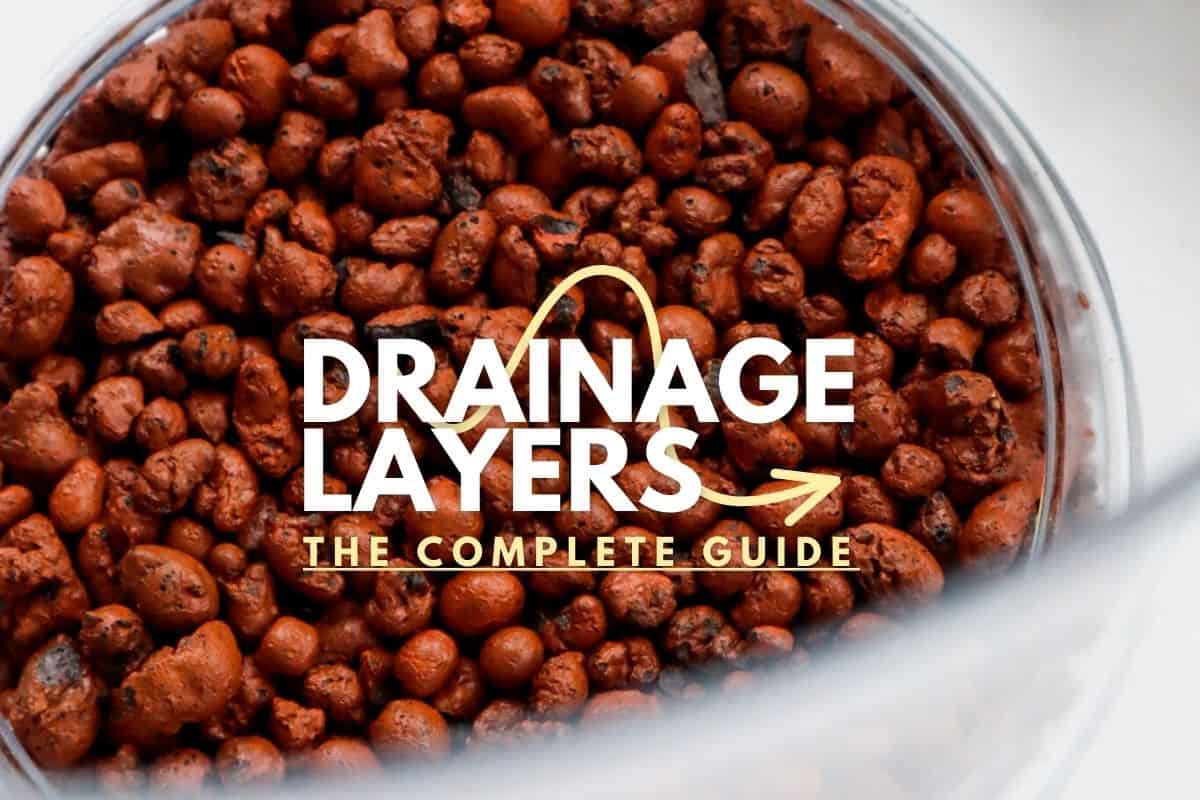
Terrarium Tribe is reader-supported. When you purchase through links on our site, we may earn an affiliate commission (at no further cost to you). 💜
Benefits of a False Bottom
False bottoms may be a simple concept, but they come with a variety of potential benefits.
- Provides a buffer so that your terrarium can balance some degree of overwatering (emphasis on some – it can’t hold back a flood).
- Reduces the risk of root rot by allowing excess water to drain and helping the roots to breathe effectively.
- Adds a purification opportunity if charcoal is used somewhere in the false bottom.
Plus, though a drainage layer shouldn’t ever be full of water (if it is, you’ve already gone way too far), there are arguably a few subtle benefits of having a little bit of extra water in there.
- Creates a reservoir of moisture for your plants. It might seem counterintuitive, but the right material (e.g., leca) can sequester water away for roots to find later.
- Boosts humidity levels by creating a supply of water to saturate the air (which tropical plants will always appreciate).
So, do you absolutely need a drainage layer?
Nope – we’ve successfully built terrariums without drainage layers. With perfect watering technique and the right substrate, you can arguably avoid many of the problems a drainage layer is designed to prevent.
That said, we still use them 90% of the time because it’s nice to have the extra protection (perfect watering even harder than it sounds).
So here’s how to make one!
How to Create a False Bottom – The Drainage Layers
1. The Foundation
As the foundation of your terrarium, you’ll need to choose a material that’s strong enough to resist compaction and support the terrarium layers above them.
Make sure they’re non-uniform in shape, so they leave plenty of space for water between them.
Being lightweight helps! As you don’t want to crack the glass.
That’s why I recommend leca clay balls as the ideal drainage layer material. They’re super lightweight and highly porous, so they can actually absorb water too.
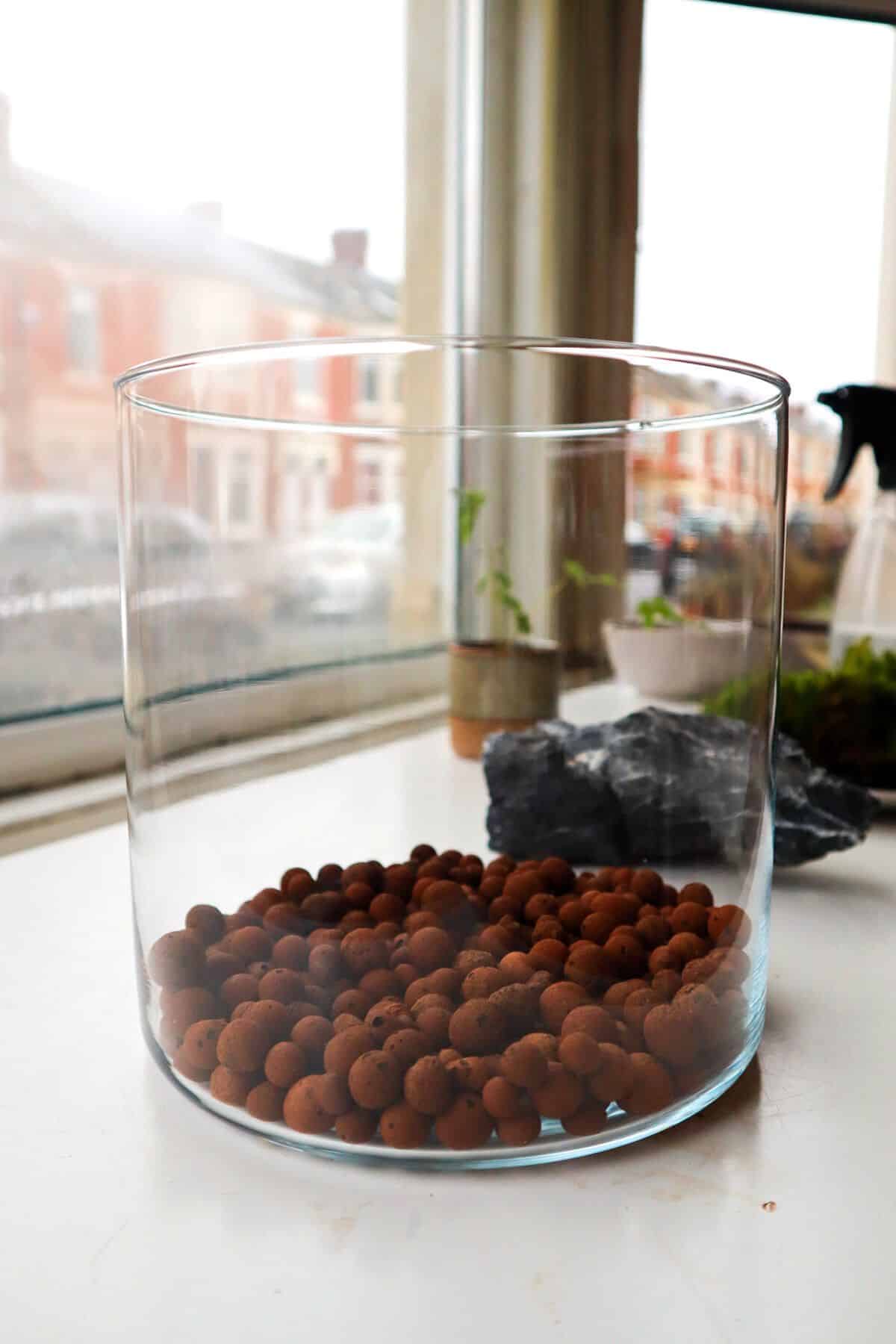
👉 Shop leca on our online store.
In practice, any tough granular material should do the job. Some other common (and potentially more aesthetic) choices are river pebbles, glass beads, sea glass, and aquarium gravel.
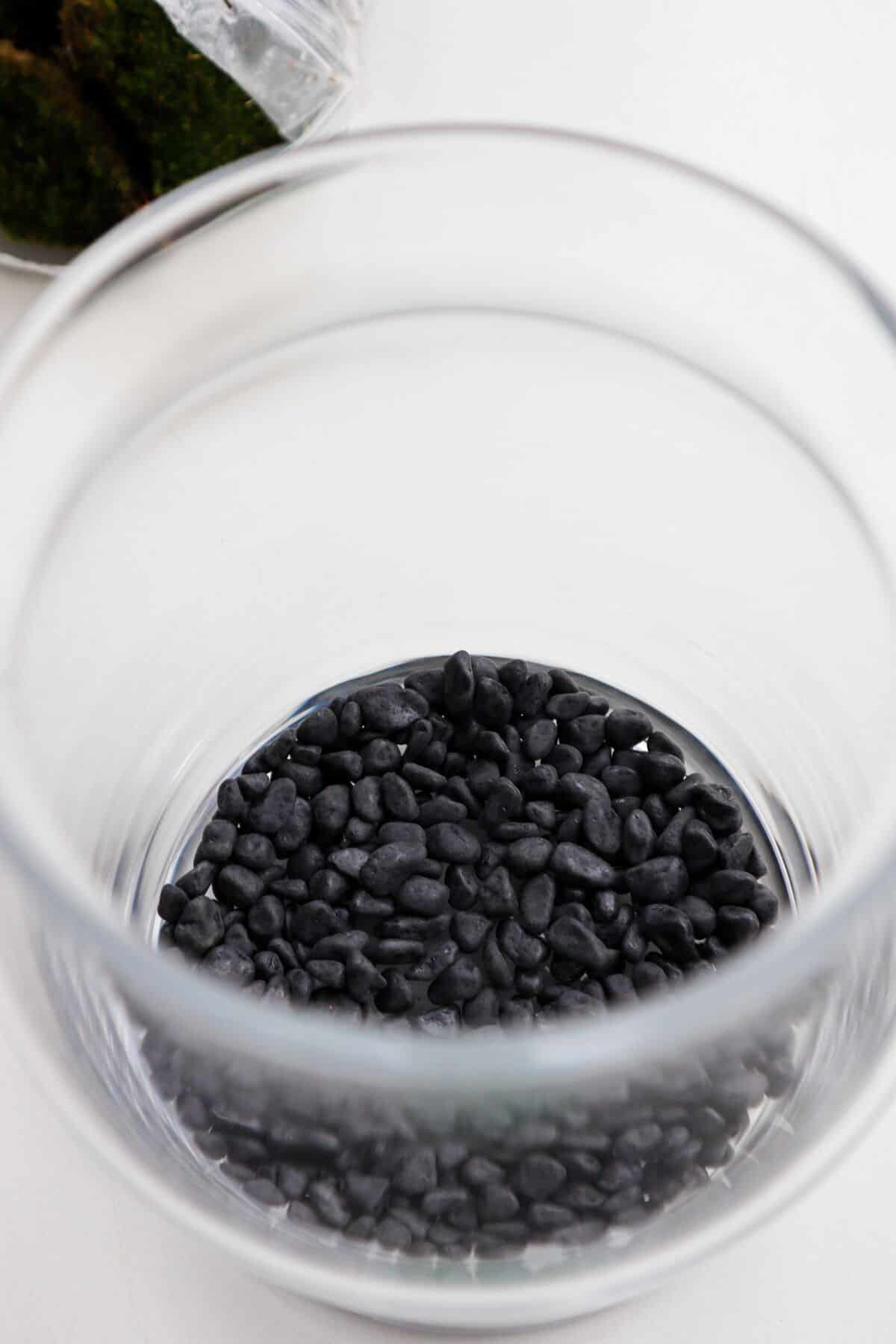
Finally, you can also use an egg crate – or some other strong grid-like layer – that can lift the contents of your terrarium away from the bottom of the container.
One note here: be careful not to make this layer too big.
Sure, you want to create a place for water to pool when needed, but you don’t want a ton of water sitting there. Stagnant water never leads to good things.
2. Activated Carbon (The Purifier)
Dropped leaves and decomposing plant material can lead to toxins and gasses building up over time.
It’s totally natural and true of any regular ecosystem. It only becomes an issue in sealed terrariums because they can’t escape, so they can end up impacting plant health (and just causing a stink).
That’s where activated charcoal/activated carbon can help – though it’s hard to quantify how much.
Activated charcoal is used in all kinds of filters and cleansers because it’s super reactive and loves to bind to toxins and impurities. So, a layer of activated charcoal can help to absorb pathogens and smells.
Most often, people (myself included) like to put this layer above the mesh layer, but in all honesty, it doesn’t matter.

You can buy activated charcoal in several forms, including fine powders and larger chunks. Though the latter is arguably better for drainage layers.
👉 Check out the activated charcoal on our shop.
3. Mesh/Screen or Fibrous Layer (The Substrate Barrier)
The final part of the puzzle is a barrier that guarantees separation from the substrate layer.
After all, you don’t want any soil/substrate falling between the cracks and clogging up your reservoir. This can only work if it’s clean and ready to receive water.
Nor do you want your plants’ roots growing into the drainage layer and defeating the purpose.
There are generally two approaches to this problem.
- The natural approach uses a fibrous barrier of sphagnum moss (or something similar).
- The artificial approach uses a thin mesh or screen. You can use various potential materials here, but arguably, the easiest and most effective approach is a fiberglass screen like this one (just don’t choose a metal one that can rust).
There are advantages and disadvantages to both.
A fiberglass screen is an unnatural element, so it’s not to everyone’s taste visually. But if you cut and place it perfectly, you can minimize its visibility from the outside.


👉 We offer 3 different sizes of barrier mesh.
Whereas a sphagnum moss layer is natural but needs to be much thicker to perform the same function. Plus, adding such a thick layer of absorbent material can significantly alter the flow of water through a terrarium.
Drainage Layers in Different Terrariums
A false bottom is useful in almost every terrarium setup, but it can serve a slightly different purpose depending on your setup.
Open Terrariums
In open terrariums, there’s no water cycle to facilitate or humidity to regulate.
In fact, the likes of succulents and cacti typically don’t want any water sitting around their roots. So the only job of that drainage layer is to allow water to freely drain away from the substrate.
For this reason, false bottoms in open terrariums tend to be much larger and more straightforward.
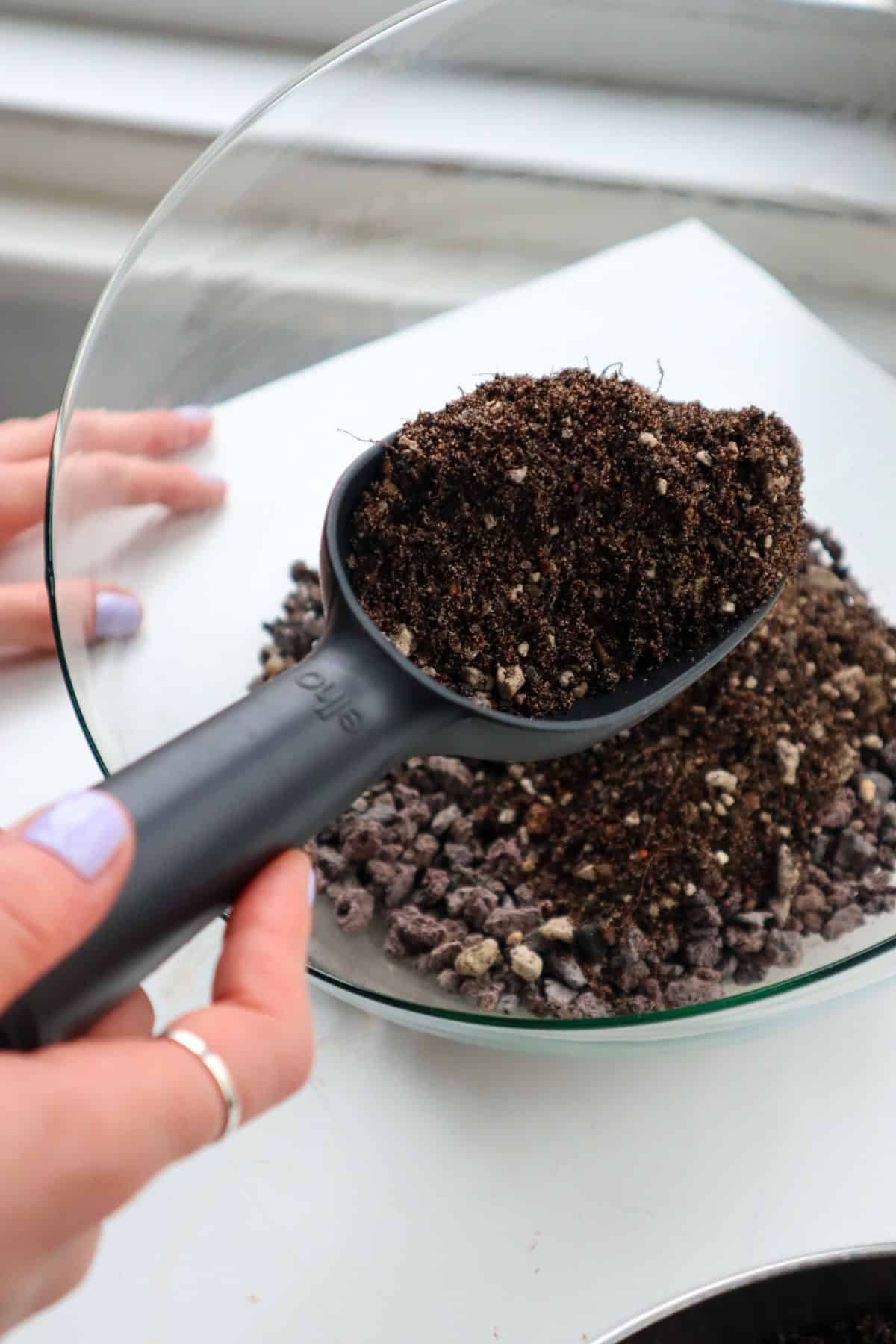
Vivariums
On the other hand, when it comes to vivarium setups, false bottoms can get technical real fast.
The truth is, there’s an added level of complexity to keeping animals in a terrarium vs. just plants.
Often they get watered more regularly (especially if there’s an automatic misting system), and there are additional needs for refreshing substrates for animals and such.
So, quite often, drainage layers must be built with the ability to actually drain the drainage layer…
A Flexible Approach to Drainage
Honestly, the false bottom process is pretty straightforward, right?
Beyond the outlined steps, everything is exactly the same as a typical terrarium build. There’s plenty of flexibility in the model, too, so you can adapt it to your needs.
Realistically, any material can be swapped out if the replacement performs the same function.
As with all terrariums, exploring different options through trial and error is a big part of the process. This isn’t the only way to make a terrarium, but it might be the best way for you!
So you don’t necessarily NEED a mesh screen or fibrous layer to have a functioning false bottom if your substrate is super spongy, as it won’t fall through the gaps.
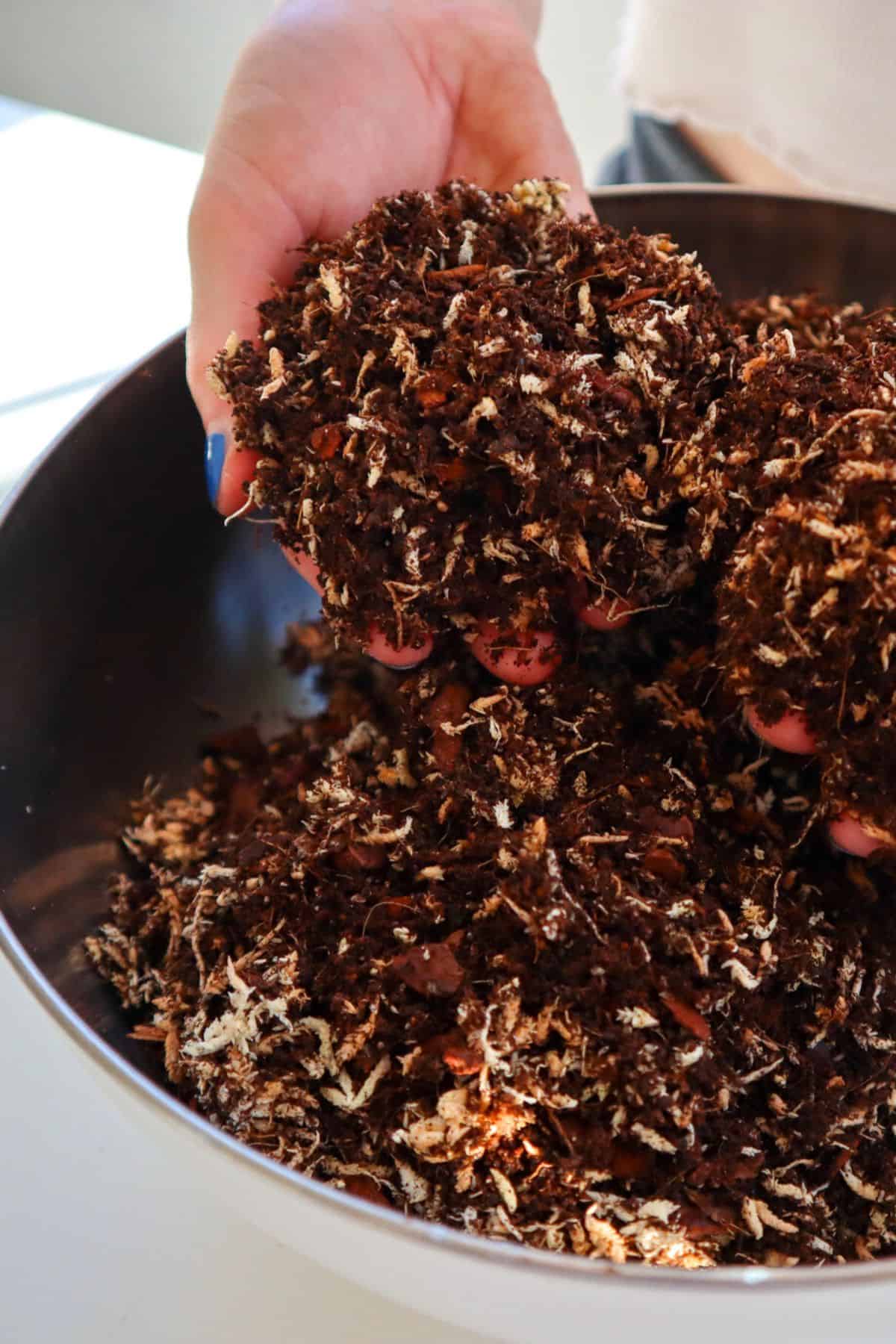
More recently I have to say I prefer using a mesh screen, though. If you cut it accurately you won’t be able to see it, and I like the peace of mind it gives.
False Bottom Terrarium FAQ
If you have a false bottom in place, it’s difficult to drain a terrarium without disrupting the whole setup. It would be easier to simply open up your terrarium and allow it to dry out naturally.
There are a variety of branded terrarium mesh barriers, but they’re still fiberglass screens. You’re best off just buying a roll of standard fiberglass screen instead.
There’s no exact formula for the optimal depth of a terrarium false bottom (it depends on the size of your container) but it should be at least 1-2 inches to work properly.
Now It’s Your Turn
Do you follow the same process for your false bottom terrariums?
Everyone has their own ways of doing things, and I’m sure terrarium-making is no different.
Let me know in the comments.

I have so many cool terrariums and and 5 times more experiments, much like my fish tanks. I’m wondering if a drainage hole could possibly work in one instead of sooo many layers and rock bottoms. we’ll see it’s only one out of 50 experiments. 🙂
Sure, larger vivariums often have a manual drainage port at the bottom. But then they typically still have the various layers too.
When building my layered substrate, I put a piece of black 1″ pvc pipe in a corner of the tank standing up. I cut the pipe so that the top of the pipe is level with the substrate. If I get too much water in the substrate I use a Turkey baster to pull the excess water out. It works great. If you want to hide the top of the pipe a small stone can be placed on the top to hide it.
Hi Dan,
Thanks for the post. I’m using white rocks as the base layer, but I’m noticing the soil is sinking into the rocks, which is making the layered look of my terrarium look messy. Do you have any tips to prevent this from happening (preferably something I could find at the dollar store to fix this issue)? The only solution I can think of right now is mixing the pebbles with sand so there’s no gaps to allow the soil to fall through. Do you think a false bottom could help? Thanks for your help!
You could add a fiberglass mesh between the rocks and substrate, or maybe thicken your substrate to a more fibrous consistency?
Hi Dan, Thanks for the informative post! I just got my first terrarium and am learning a lot. My false bottom is quite shallow – is it good to always see some amount of water in that layer, or is that a sign of over watering?
Hi Jillian, generally speaking, you don’t want to see water pooling in the false bottom (consistently/over time) as it’s a sign that the substrate is oversaturating.
I use coir ‘fabric’ to top off a drainage layer in my vivariums. All natural and it can be all inl one piece. It can be cut to size but it is tougher to cut than mesh or screening is for sure.
It swells once wet so it needs to be a bit smaller than the area to be covered over so it won’t be too big when it swells.
It’s essentially the same thing that coir basket liners are made from but you can get it in rolls or by the yard at some nurseries.
It is very long lasting and keeps soil where it belongs but roots can grow through it easily. That may be the one disadvantage to it as if it gets filled with roots it’s going to do a fair bit of root damage if it has to be pulled off the root layer.
Being a natural fibre, if you really wanted to, you could dye the edges to make it even less obtrusive, a very dark brown or near black to match soil.
That sounds like an ideal medium to use Karen!